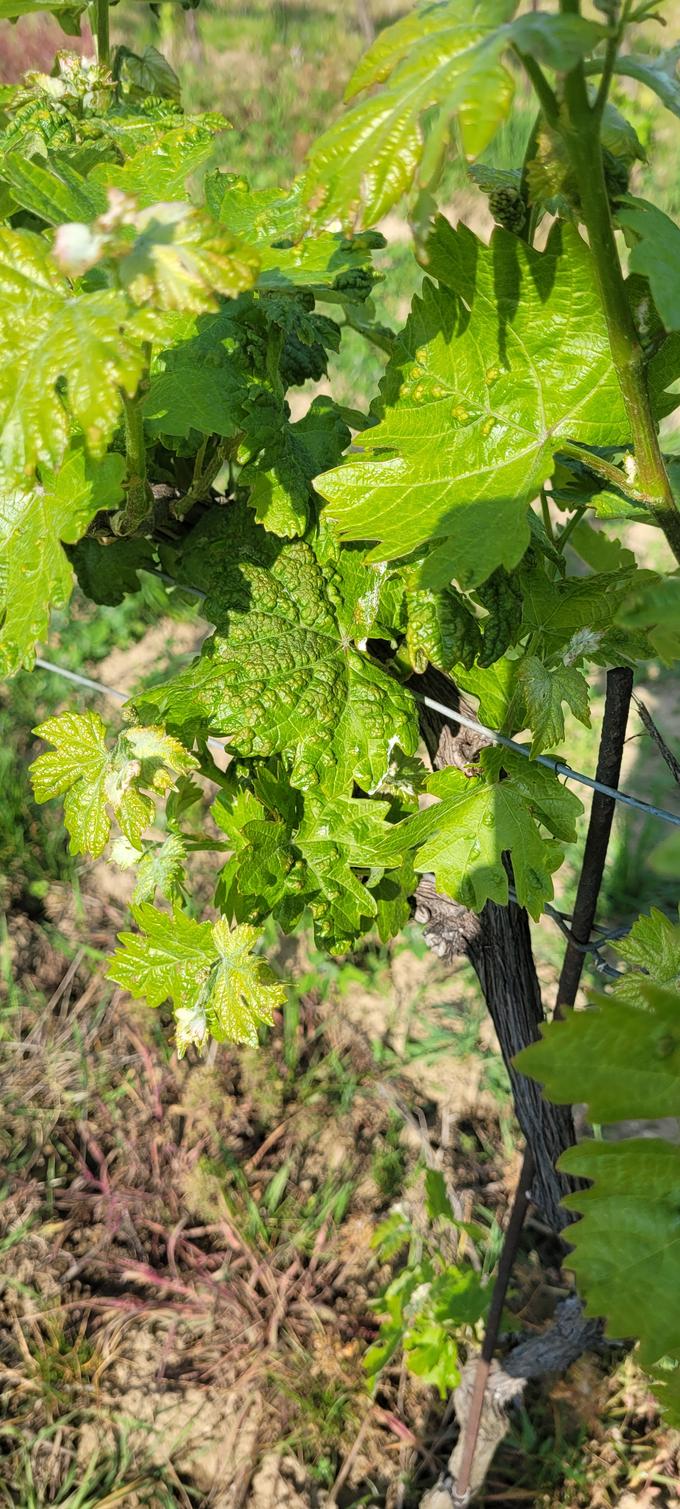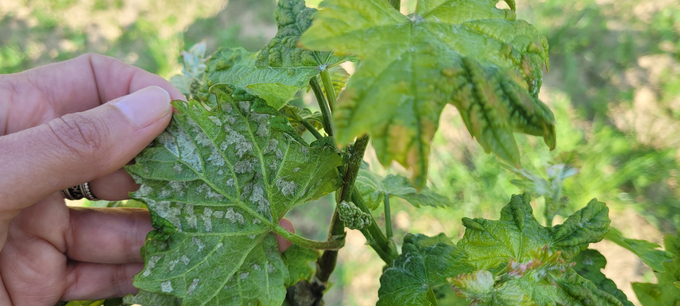Erineum leaf mite
Colomerus vitis
Profile
The grapevine pox mite or grapevine leaf gall mite is a microscopic pest that lives on grapevines. They cause roundish, raised deformations on the leaf surfaces that look like smallpox. In low infestations, this mainly means aesthetic damage, but in severe cases, inflorescences can also be affected.
Biology
The grapevine pox mite belongs to the gall mite family (Eriophyidae).
Adult grapevine pox mites overwinter in the dormant grapevine buds. From about the end of April, bud swelling occurs and the mites begin sucking on the young shoots. Gall mites trigger excessive growth by sucking on the plant cells, which leads to gall formation. Part of the epidermal cells grows into hair cells, which form a dense hair felt. This provides good protection and favorable microclimatic conditions for the offspring that grow under it. Development proceeds through egg, larval and nymph stages to the adult gall mite.
Up to seven generations can occur between spring and fall.
Damage symptoms
The pox mite causes conspicuous pockmarked elevations on the upper surface of the leaves, while the underside of the leaves is lined with a dense white or reddish-brown hair felt. In severe cases, the entire foliage may be covered with pox and even flower heads are affected. Affected shoots turn reddish and also have a whitish, hairy felt. More or less severe trickling is possible. Leaf pox remains visible throughout the growing season.
Prevention and control
- Protecting or encouraging natural enemies of the pox mite, especially predatory mites and predatory gall midge larvae, is the best prevention. From November to February, a predatory mite naturalization(Typhlodromus pyri) should be carried out so that they can become active at the first rising temperatures.
- From the beginning of April to the beginning of May (bud swell), application with a budburst spray is effective. (see list of plant protection products approved in Austria). Thorough wetting is a prerequisite for a satisfactory effect. This treatment is particularly important if an increased incidence was observed in the previous year.
Last updated: 07.09.2023
automatically translated

